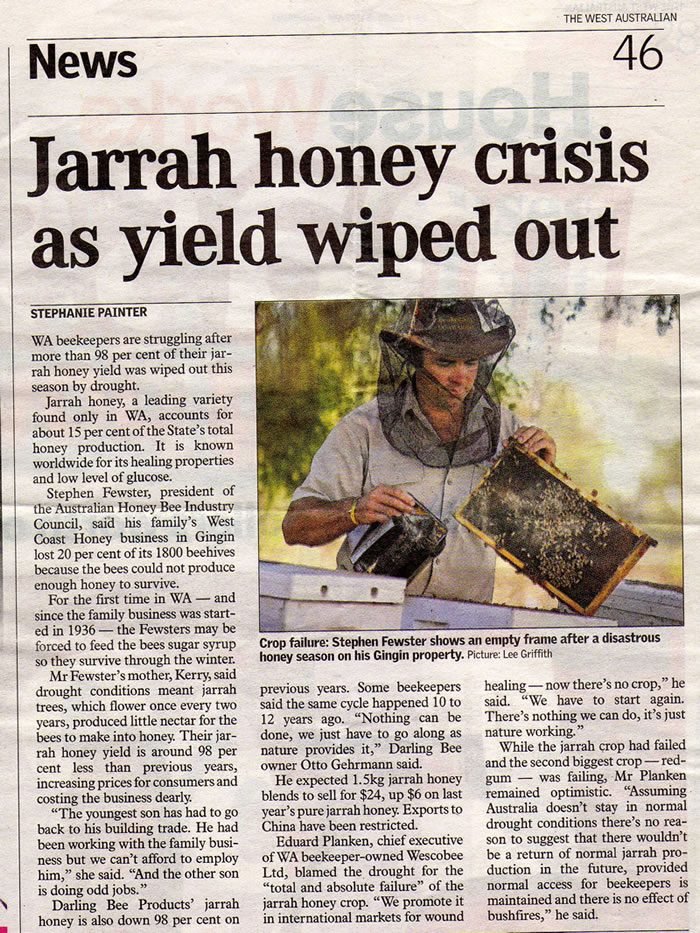WA beekeepers are struggling after more than 98 per cent of their jar-rah honey yield was wiped out this season by drought. Jarrah honey, a leading variety found only in WA, accounts for about 15 per cent of the State’s total honey production. It is known worldwide for its healing properties and low level of glucose. Stephen Fewster, president of the Australian Honey Bee Industry Council, said his family’s West Coast Honey business in Gingin lost 20 per cent of its 1800 beehives because the bees could not produce enough honey to survive. For the first time in WA — and since the family business was start-ed in 1936 — the Fewsters may be forced to feed the bees sugar syrup so they survive through the winter. Mr Fewster’s mother, Kerry, said drought conditions meant jarrah trees, which flower once every two years, produced little nectar for the bees to make into honey. Their jar-rah honey yield is around 98 per cent less than previous years, increasing prices for consumers and costing the business dearly. “The youngest son has had to go back to his building trade. He had been working with the family busi-ness but we can’t afford to employ him,” she said. “And the other son is doing odd jobs.” Darling Bee Products’ jarrah honey is also down 98 per cent on
Crop failure: Stephen Fewster shows an empty frame after a disastrous honey season on his Gingin property. Picture: Lee Griffith
previous years. Some beekeepers said the same cycle happened 10 to 12 years ago. “Nothing can be done, we just have to go along as nature provides it,” Darling Bee owner Otto Gehrmann said. He expected 1.5kg jarrah honey blends to sell for $24, up $6 on last year’s pure jarrah honey. Exports to China have been restricted. Eduard Planken, chief executive of WA beekeeper-owned Wescobee Ltd, blamed the drought for the “total and absolute failure” of the jarrah honey crop. “We promote it in international markets for wound
healing — now there’s no crop,” he said. “We have to start again. There’s nothing we can do, it’s just nature working.” While the jarrah crop had failed and the second biggest crop— red-gum — was failing, Mr Planken remained optimistic. “Assuming Australia doesn’t stay in normal drought conditions there’s no rea-son to suggest that there wouldn’t be a return of normal jarrah pro-duction in the future, provided normal access for beekeepers is maintained and there is no effect of bushfires,” he said.
